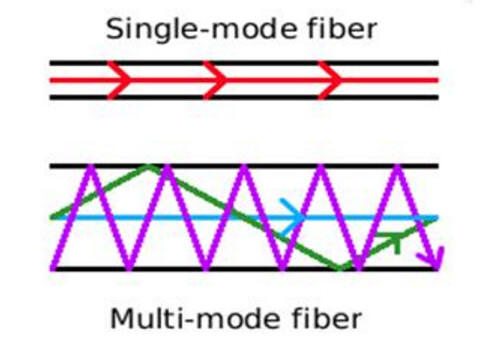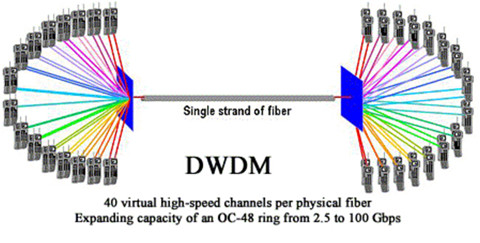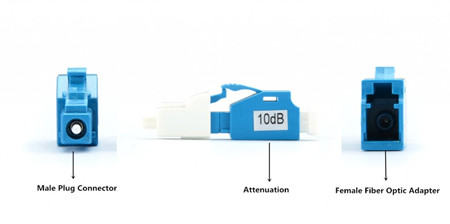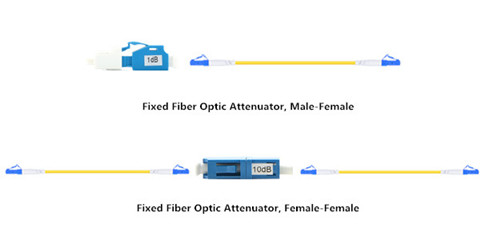Do You Know How Fast Your Fiber Optic Internet Can Be?
utorak , 06.12.2016.It is no secret that the technology is continually evolving, so does the demand for consistent and accessible information and entertainment. From the old 56 kbqs crawl of dial-up, to the early 1 Mbqs copper connections and all the way to the existing popular 1 Gbqs, 10 Gbqs/40 Gbqs fiber optic connections, we’ve gone through a drastic improvement to maintain a stronger signal, a better connection, a faster speed. It seems that the intricacies of internet can get complicated, so how do you draw the line with your internet consumption and speed demands? So in this blog post, we explain how fiber optic works, why cause the boom in fiber optic speed and how fast fiber optic internet can be.
How Does an Fiber Glass Function in the Internet?
We know that fiber optic cable works like a bridge between the consumer and internet supplier. But how does this process actually work? To put it simply, fiber cable works by sending data as pulses of light through a glass fiber. At one end of the fiber, a laser or LED transmits data as light. At the other end of the cable, the light will be interpreted into data by the light-sensitive receptors.
If the above explanation is not clear to you, then here comes the more vivid description. Fiber optic cables consists of a strand of fiber glass wrapped in a protective jacket called cladding. Owing to the total internal reflection, light can go from one end of the core to the other end without ever changing its wavelength. More detailed information, please see an article entitled “A Quick Lesson In Fiber Optics”.
Fiber Optic Cable Types: Single-mode and Multimode Fiber
Single-mode and multimode fibers are the two broad categories of fiber core that can affect how light can travel through the cable. In single-mode fiber optic system, there is only one pathway or mode that light can travel along. While in multimode fiber optic system, seen in the below image, there are multiple pathways just like a circus funhouse with beams of light traveling along a variety of pathways through the core.

Theoretical, if you have one light beam traveling in both the single-mode and multimode fibers, the straight line beam of the single-mode fibers will reach its destination first. This difference is usually caused by the modal dispersion, which explain the reason why we often use the single-mode fibers for longer reach application.
WDM and Dark Fibers
The advent of WDM (wavelength division multiplexing) in the mod-2000s as a great breakthrough in fiber optics as it allows multiple channels to be carried at the same tine on a single fiber optic cable. There are all together CWDM and DWDM systems, CWDM or course WDM is the initial implement that allows 4 and 8 wavelengths, such as the Ethernet LX-4 standard which allowed a cable to carry four 3.125 Gbit/s data channels, resulting in 10Gbit/s aggregate.
In DWDM (Dense WDM) system, even though it is much more expensive, it can handle up to 160 data channels expanding basic a 10 Gbit/s system over a single fiber pair to over 1.6 Tbit/s.

Figure 2 display different wavelengths can be bundled together in the same mode.
In terms of the new concept—dark fiber, it represents the unused cable laid in the network as space capacity, carrying high amounts of data at high speeds over hundreds of miles. Simply put, with DWDM, dark fiber network can easily increase bandwidth and allow more data to be send via optical fibers. And as the price reduces, dark fibers are gradually becoming more popular than ever.
How Do You Find out What Speed You Need?
This seems to be a noob question. As you can simply use the speed testing websites to discover the speed of your internet connection. And tracking the aspects of your internet use can give a better ideal of what speed you have and the speed that is optimal for you. What I want to express here is the common mistakes you will make.
It is not always the ISP’s fault, if your speeds are slower than what you expect. Several factors might have great impact on the accuracy of speeds. For example, the types of the hardware you have, the age/types of the line you have, and how busy the internet is at all time.
To find what speed you need depends on several different elements. How you plan to use the Internet, how many devices you have in your home, and how fast you expect to be connected are just a few factors that influence which speed is right for you. For office network, network speed under gigabit Ethernet is not sufficient.
Remember, speed is a maximum level, not a guaranteed one. As your desire for a faster connection increases, be sure you have the Internet speed that will exceed your technological needs!
The Next Steps for Fiber Optics
The modern commercial fiber optic system enjoys it stay in the Gigabit Ethernet speed. But we can look forward to the increases in the range of gigabits per second down speed, perhaps even breaking into the terabit range, in the not so distant future.
Oznake: fiber optic internet, fiber optic cable, DWDM
komentiraj (0) * ispiši * #
Introduction to Fiber Optic Attenuator
srijeda , 09.11.2016.Fiber optic attenuators are often used to control the optical signal strength in fiber optic links. For example, in a DWDM based system, the DWDM employs multiple wavelengths and channels in different communication protocols and bit rates requiring precise tuning of the power levels of the channel signals. Fiber optic attenuators are often used to adjust the optical power signal strength. How exactly does the fiber optic attenuator work? This article might provide you some information.
What Is Fiber Optic Attenuator?
A fiber optic attenuator, also called as an optical attenuator, can simulate the optical loss that could be caused by a long period of fiber. Put it simply, for a fiber optic receiver, too much light can overload it and degrade the bit error ratio. Therefore, the light power at the receiver end should be reduced. Fiber optic attenuators fit the requirement perfectly. This usually happen when the transmitter delivers too much power like the single-mode system, or the transmitter is simply too near to the receiver. Optical attenuators can be divided into two types—fixed and variable attenuators.
Fixed Fiber Optic Attenuators
Fixed fiber optic attenuator, also called fixed plug type or fixed build-out fiber optic attenuator, is used in fiber optic communications to reduce the optical fiber power by a certain level. Fixed fiber optic attenuators have fixed values that are specified in decibels from 1dB to 30dB. Usually, it has a male plug connector at one side to allow the attenuator to be plugged directly into receiver equipment or adapters in patch panel, and has female type fiber optic adapter at the other side to allow the patch cords to plug in (seen in the below image).

Fixed fiber optic attenuator is based on the connector type and the attenuation level. For instance, LC 10dB fixed fiber optic attenuator means this attenuator use LC fiber optic connector, and it can reduce the optical fiber power level by 10dB. Their applications include telecommunication networks, optical fiber test facility, LAN and CATV systems.
Variable Fiber Optic Attenuators
Variable fiber optic attenuators (or adjustable fiber optic attenuator) are with adjustable attenuation range. It usually is inline type, the appearance like fiber optic patch cord; it is with an adjustable component in the middle of the device to change the attenuation level to a certain figure. There are also handheld variable fiber optic attenuators; they are used as test equipment, and we have the inline fiber optic attenuators.
How to Use Fixed Fiber Optic Attenuator?
In general, multimode systems do not need attenuators as the multimode sources, VCSELs, rarely have enough power output to saturate receivers. Instead, single-mode systems, especially short links, often have too much power and need optical attenuators. Therefore, fixed fiber optic attenuators are usually single-mode types. Fixed fiber optic attenuators should be always installed at the receiver end of the link (X in the drawing). This is because it’s more convenient to test the receiver power before and after attenuation or while adjusting it with your power meter at the receiver, plus any reflectance will be attenuated on its path back to the source.

For female to male fixed fiber optic attenuators, we can plug the fiber cable to the female fiber optic adapter of the attenuator. And then plug the male plug connector of the attenuator to the equipment directly. For female to female fixed fiber optic attenuators, we should plug the two patch cords to the two female fiber optic adapter of the attenuator (shown in the above figure).
Conclusion
Optical attenuators can be divided into four classes depending on the type of ports, namely, SC, LC, FC, ST optical attenuators. FS.COM as a attenuator manufacturer, provide several types of attenuator as well as other related products such as adapter, multiplexer, optical converter and so on. Our fixed fiber optic attenuators offer low return loss, high mode stability and a variety of attenuation values. Even you are not clear about some specifications which you need, you can directly visit the fiber store.
Oznake: Fiber Optic Attenuator, DWDM, CWDM, Fixed Fiber Optic Attenuators
komentiraj (0) * ispiši * #
